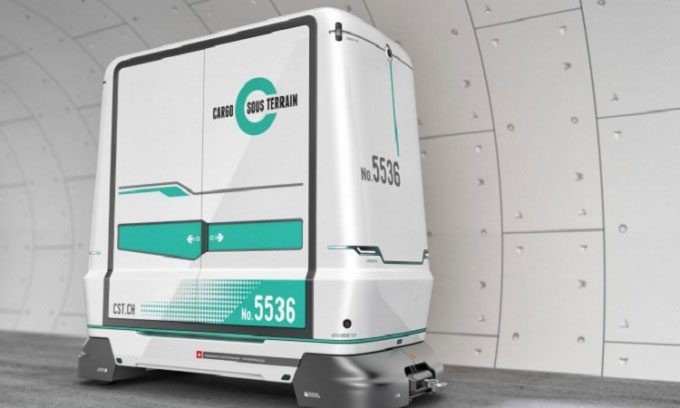The Cargo sous terrain system will transport goods through a 500 km underground network using automated vehicles.
The Swiss Parliament approved the underground freight transport plan in December of last year. Starting from August 2022, the Swiss government can begin construction of the Cargo sous terrain (CST) system. This initiative is the result of collaboration among various Swiss companies in the fields of transportation, logistics, retail, telecommunications, and energy. CST utilizes the principles of an automated conveyor system to connect products and transport stations with urban centers.

Vehicles used for underground freight transport. (Photo: CST)
The stations within the system are equipped with vertical lifts that can automatically load and unload goods from the transportation network located entirely underground. The transportation of goods within the system is handled by electric-powered vehicles that travel at speeds of 30 km/h. Goods are placed in shelving units or modified containers. Food and frozen items can also be transported through this system, utilizing vehicles that include refrigeration units.
The distribution process will be planned in advance to deliver goods from the transport stations to sales channels and customers. The vehicles used for transporting goods are not only environmentally friendly but also operate on the most energy-efficient routes.
Initially proposed in 2016, the CST project has an estimated cost of $3.5 billion for a 500 km network extending from St. Gallen in northeastern Switzerland to Geneva in the southwest at that time. However, the project, which commenced on August 1, only includes a short 70 km segment between the cities of Härkingen-Niederbipp and Zurich, featuring 10 connecting stations and is expected to be completed by 2031. The cost for this pilot phase is $3 billion, while the total project cost has surged to $35 billion. Investors in the project are confident that their renewable energy-powered system will significantly reduce ground freight vehicles by 2045.


















































